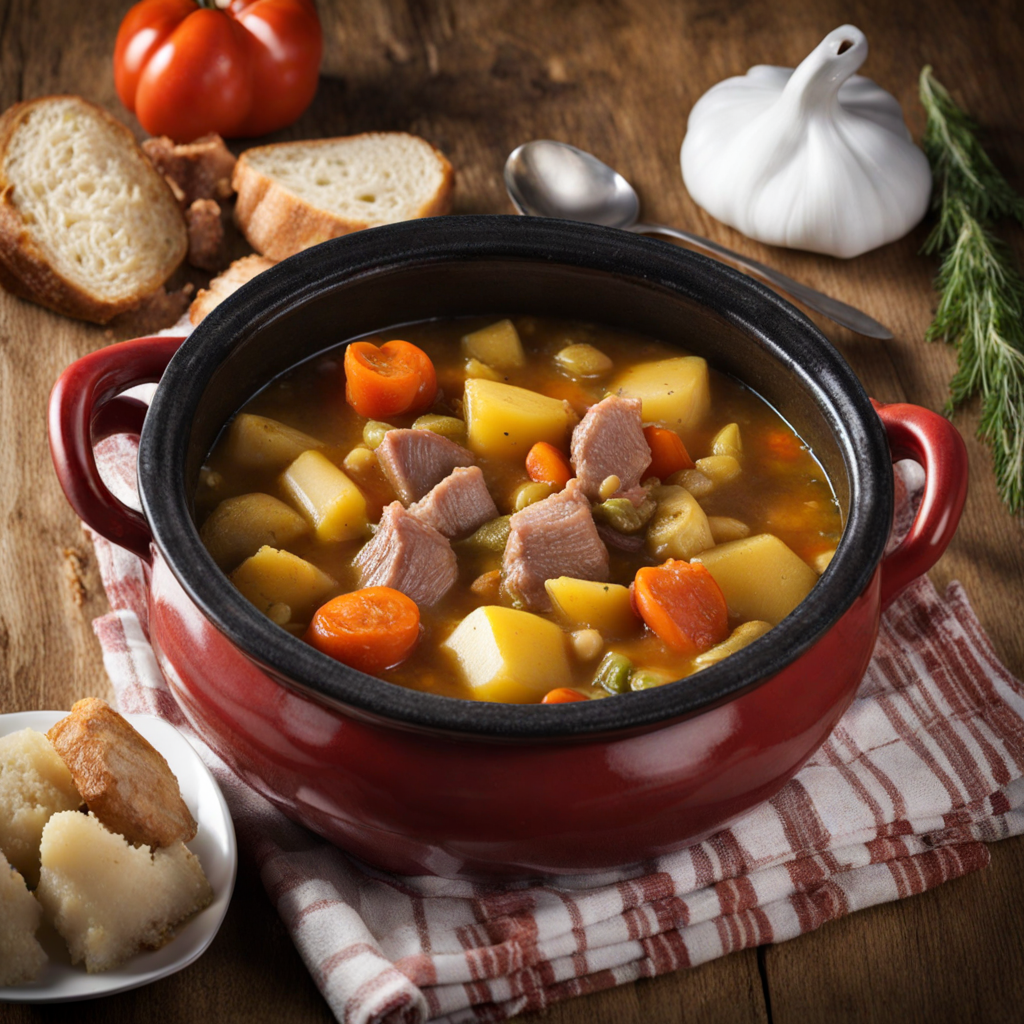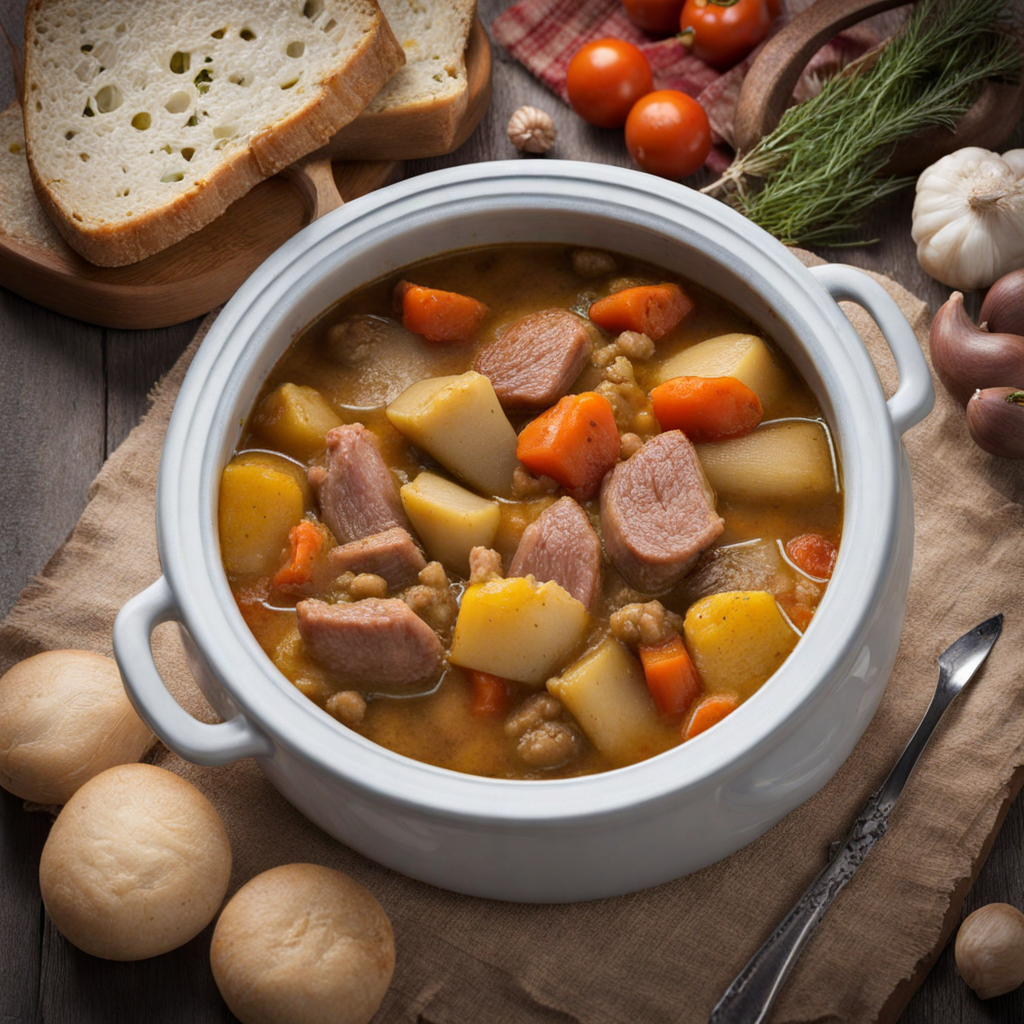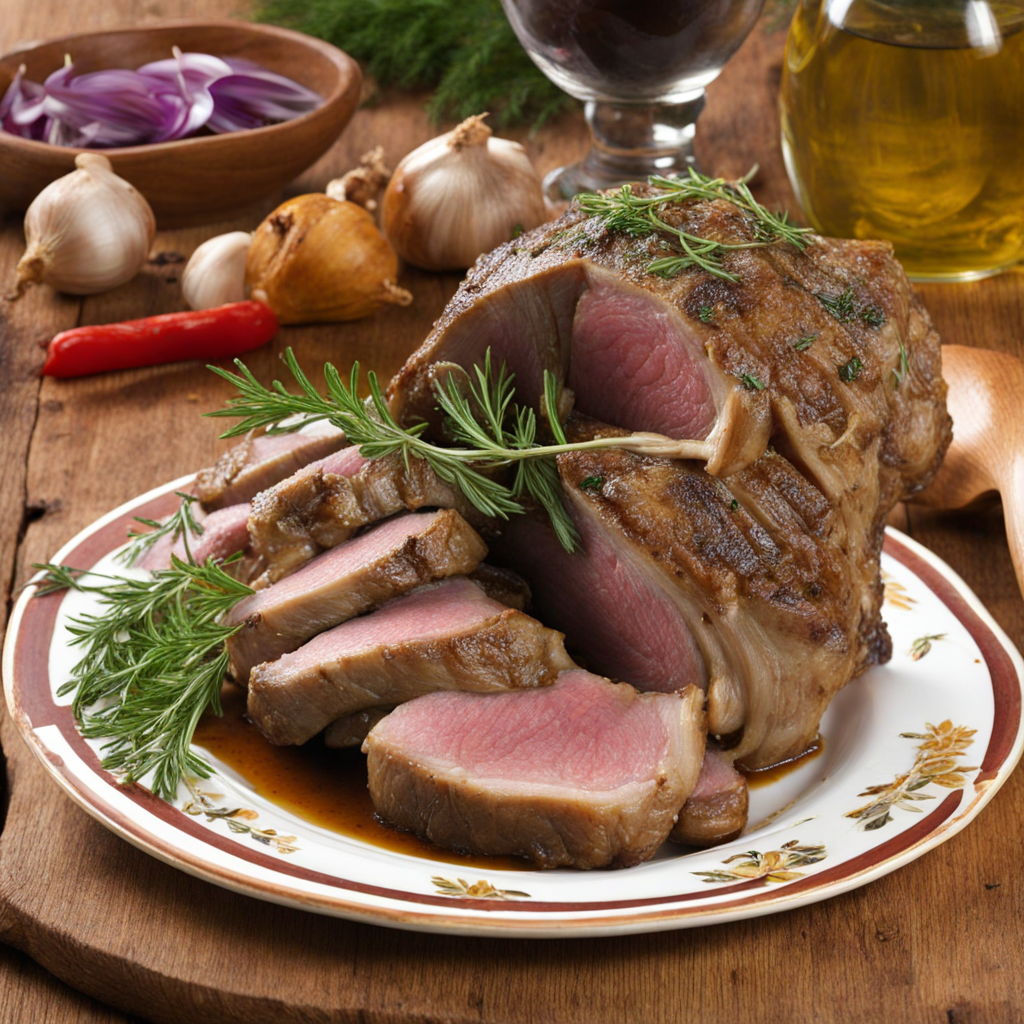Olla aranesa
Olla aranesa is a hearty and flavorful dish that embodies the rustic charm of Andorran cuisine. Traditionally prepared in a large pot, this dish is a robust stew that features a variety of meats, such as pork, beef, and sometimes even game, all simmered to perfection. The slow-cooking process allows the flavors to meld beautifully, creating a rich and savory broth that is both comforting and satisfying. Accompanied by vegetables like potatoes, carrots, and occasionally beans, it showcases the simplicity and abundance of the region’s produce. What sets olla aranesa apart is its unique blend of spices and herbs, which enhance the natural flavors of the ingredients. The use of local seasonings adds depth to the dish, creating a warm and aromatic experience with every bite. Each family may have its own variation, often passed down through generations, making it a cherished part of Andorra's culinary heritage. This communal dish is typically enjoyed during colder months, offering both nourishment and a sense of togetherness. To fully appreciate olla aranesa, it is best served hot, often accompanied by crusty bread for dipping into the rich broth. The first spoonful reveals a delightful medley of textures, as tender meats contrast with the softness of the vegetables. Each mouthful is a celebration of the land, reflecting the pastoral lifestyle of Andorra's mountainous regions. Discovering olla aranesa is not just about tasting a dish; it's about experiencing the warmth and hospitality that Andorran culture shares through its food.
How It Became This Dish
Olla Aranesa: A Culinary Tradition from Andorra Nestled high in the Pyrenees, Andorra is a small, landlocked principality bordered by France and Spain. Despite its size, Andorra boasts a rich cultural tapestry deeply woven with influences from its neighboring countries. One culinary gem that has emerged from this mountainous land is "Olla Aranesa," a traditional stew that reflects the history, culture, and resilient spirit of the Andorran people. Origins of Olla Aranesa The roots of Olla Aranesa can be traced back to the Val d'Aran, a region in the Catalan Pyrenees, which is home to a unique blend of cultures. The dish is thought to have evolved from the ancient practice of communal cooking in the harsh mountain environment, where ingredients were limited and often seasonal. Historical accounts suggest that the dish has its origins in the medieval era, when peasants needed to make the most out of what they had available. The name "olla" translates to "pot" in Spanish, referencing the vessel in which the dish is traditionally prepared. The "Aranesa" part of the name signifies its geographical roots in the Val d'Aran. This hearty stew embodies the essence of peasant cooking, where simple, rustic ingredients are transformed into a warming, nourishing meal. The dish is also a testament to the resourcefulness of the locals, who learned to adapt their cooking methods to the climate and available produce. Cultural Significance Olla Aranesa is more than just a meal; it is a symbol of Andorran heritage and community. Traditionally, it is prepared during the colder months and is often associated with family gatherings and celebrations. The preparation of the dish is a communal activity, with families coming together to contribute their share of ingredients, be it meats, vegetables, or legumes. This shared effort fosters a sense of unity and belonging, reinforcing the cultural values of cooperation and hospitality. The dish also holds a significant place during local festivities. In Andorra, winter celebrations often feature Olla Aranesa as a central dish, serving as a warming comfort food that brings people together. The act of sharing a meal has deep roots in Andorran culture, and Olla Aranesa serves as a medium for storytelling, reminiscence, and the strengthening of familial bonds. Ingredients and Preparation Traditionally, Olla Aranesa is made with a blend of meats, vegetables, and legumes. The primary proteins used include pork, beef, and sometimes lamb, reflecting the pastoral lifestyle of the Andorran people. The meat is typically slow-cooked with various root vegetables such as potatoes, carrots, and turnips, which thrive in the harsh climate of the Pyrenees. Legumes such as chickpeas or white beans are also a staple, adding heartiness to the dish. The preparation of Olla Aranesa is both an art and a science. The ingredients are layered in a large pot, starting with the meat at the bottom, followed by the vegetables and legumes. Water is added, and the pot is placed over a low flame for several hours. As it simmers, the flavors meld together, resulting in a rich, savory broth. In modern times, variations of the dish have emerged, reflecting the changing tastes and availability of ingredients. While purists may adhere to the traditional recipe, contemporary cooks often experiment with herbs, spices, and even alternative proteins such as game or poultry, making the dish more versatile and appealing to a broader audience. Evolution Over Time As Andorra has evolved from a secluded mountain community into a popular tourist destination, Olla Aranesa has undergone significant changes. The influx of visitors has led to a renewed interest in traditional dishes, prompting chefs to showcase Olla Aranesa in local restaurants. This has resulted in a fusion of traditional and modern culinary techniques, allowing the dish to reach a wider audience while maintaining its cultural integrity. The revival of interest in local gastronomy has also spurred Andorran chefs to elevate Olla Aranesa, presenting it in innovative ways. Gastronomic festivals and events celebrate this dish, encouraging chefs to experiment with plating, presentation, and flavor pairings, often incorporating local wines and artisanal breads. Despite these modern adaptations, the essence of Olla Aranesa remains intact. It continues to be a dish that embodies the spirit of Andorra, representing the resilience and adaptability of its people. The communal aspect of its preparation and consumption has also persisted, with families and friends gathering around the table to enjoy this hearty stew and share stories of their heritage. Contemporary Significance In the 21st century, Olla Aranesa stands as a culinary ambassador for Andorra. It symbolizes the country's rich cultural heritage while serving as a reminder of the importance of community and togetherness. As global culinary trends lean towards sustainability and local sourcing, Olla Aranesa’s emphasis on seasonal ingredients and traditional cooking methods aligns perfectly with contemporary dining philosophies. Moreover, Olla Aranesa has found its way into the hearts of food enthusiasts beyond Andorra. With the rise of social media and food blogging, many have shared their experiences of enjoying this dish, leading to a broader appreciation for Andorran cuisine. Food festivals and culinary tours in Andorra often highlight Olla Aranesa, allowing visitors to engage with the dish's history and cultural significance. Conclusion Olla Aranesa is a culinary treasure that encapsulates the essence of Andorran culture. Its origins in peasant cooking, cultural significance in community gatherings, and evolution over time reflect the resilience of a people who have thrived in one of Europe’s most challenging landscapes. As Andorra continues to embrace its culinary heritage while adapting to the modern world, Olla Aranesa remains a beloved dish that nourishes not just the body, but the spirit of togetherness that is at the heart of Andorran life. Whether enjoyed in a rustic mountain home or a contemporary restaurant, Olla Aranesa is a dish that tells a story of tradition, community, and the enduring love of good food.
You may like
Discover local flavors from Andorra







